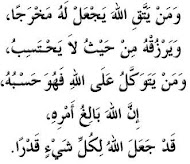Before proceed, this is clinical diagnostic approach.
1) Which side of body lesion
2) Head involvement or not?
3) Signs of UMN or LMN..
4) At which level the problem arise
Ok! Let make this simple. First, let us make some revision ok. Remember that our motor system is a pathway starts from the motor cortex until Neuromuscular junction.
K. to make things easier. Upper motor cortex has cell body in brain and it’s axon extends into spinal cord and end at SYNAPSE. (so! At this pint kena ingat 2 tract utama iaitu corticospinal tract dan corticobulbar tract. (So it include brain cortex, corona radiate, blab la bla sampai la dia sampai kat anterior horn cell utk synapse ngan LMN)
Lower motor neuron on the other hand has a cell body in spinal cord/brainstem and axon extend outward in a cranial or spinal motor nerve to reach an effector.
For muscle of upper limb and lower limbs, it’s quite easy because remember that corticospinal tract will decussate at medulla to form lateral corticospinal tract. So, lesion of UMN produce contralateral signs. But, still got to remember that there’s also fibres that do not cross and form anterior corticospinal tract. This hence will produce ipsilateral signs. So, at this point, u have to remember the characteristic of UMN LESION which are initial muscle weakness or paralysis, spasticity of affected muscle, hyperactivity of tendon reflex (sebab UMN hantar inhibitory neuron utk reflex. Kalau rosak, dah xde inhibition) and babinsky. In UMN lesion, the wont be any fasciculation, muscle wasting or fasciculation. So, utk LMN lesion, body lesion will be ipsilateral. (ingat kita nyer spinal cord tu. Kan dia nyer nerve yang kuar tu direct je). (tapi ipsilateral boleh jadi juga disebabkan oleh UMN Lesion. So time ni kena la tengok signs dia pulak). Signs of LMN lesion include muscle weakness, wasting, flaccidity, hypoactivity or absent tendon reflex(ingat yg inhibitory neuron x rosak.), fasciculation and no pathological reflex..
Easy right. But for face, it’s quite different due to innervations. Lower face innervate by ipsilateral cerebral hemisphere meanwhile upper face by both cerebral hemisphere. So it can be quite tricky.
Ok. Last step is to determine the site of lesion. Ok! This one you have to memorize the anatomy. Can not help much. But I just know two trick only. First; If face involve, think that the lesion is in your head. Second trick is; if both face and hand involve+ voice production problem(dysphagia or dysphonia) and also sensory impairment always think of lateral medullary symptoms.
K! Gud luck guys…………….







4 comments:
azizi,hang tukaq setting untuk comment jugak?mantap la weyh*jeles*
by the way,naim,,cakap kata tensen,tapi explain ok je.dh hbs tensen ka?
tak tau nape. tp minat giler2 blok cns dgn psychiatry.. mencabar tp best.. prob nye selalu lupa.. sadis tul la.. ada ape2 petua tak utk kuatkan ingatan??>
Naim,
Arigator. Tadi sangat seronok masuk wad neuro sebab faham UMN and LMN! Tak pasal-pasal jadi student hyperactive.
Thanx a lot dear doc!
Azizi, kenapa nak tahniah? Huda faham je kot, bukan dapat jawab exam. Hahahahahahha.
Post a Comment